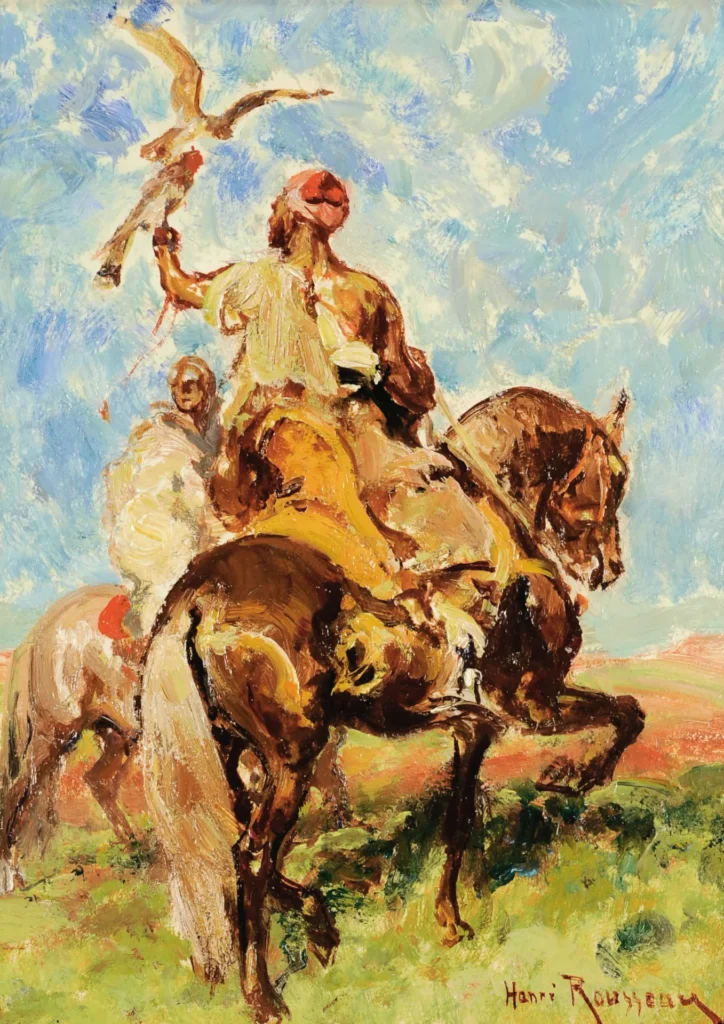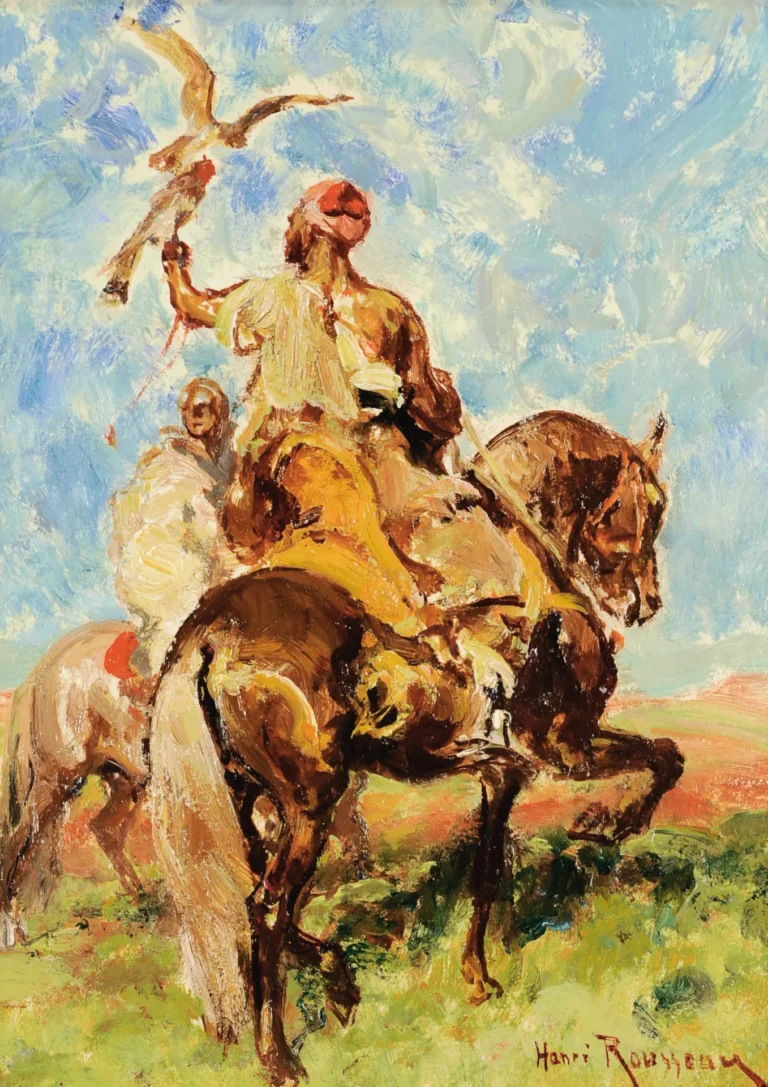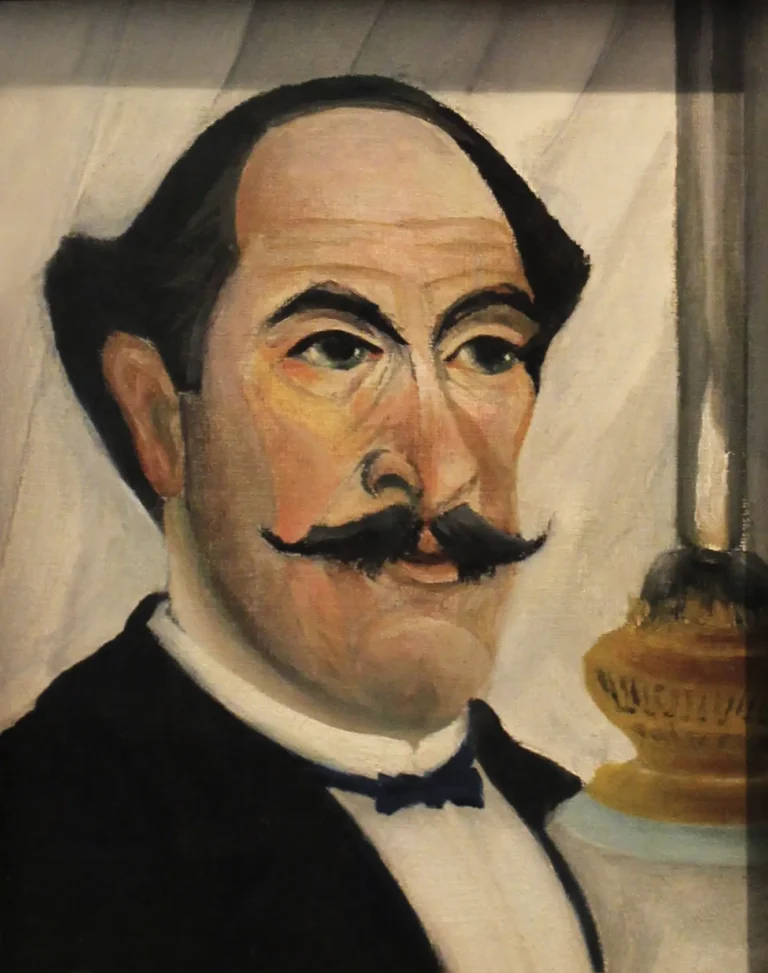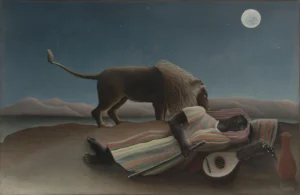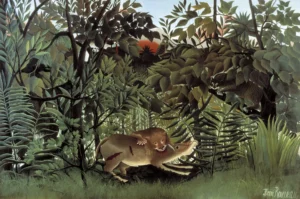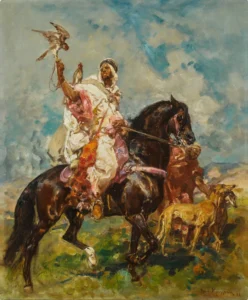Le Fauconnier
Le Fauconnier, painted by Henri Émilien Rousseau, portrays an evocative scene centered around the noble figure of a falconer. The artwork encapsulates Rousseau's talent for depicting exotic subjects through his characteristic Orientalist lens. With its rich colors and intricate details, the piece invites viewers into a world of cultural fascination and adventure, representing a significant period in Rousseau's artistic journey.
Early 20th Century
About the Artwork
Henri Émilien Rousseau, born in 1875, thrived within the vibrant art scene that embraced Orientalism during the late 19th and early 20th centuries. He became known for his ability to bring to life the mystique of Eastern cultures, especially through depictions of horses and their riders. Le Fauconnier stands as a testament to his artistic vision, showcasing a falconer—an archetype of strength, tradition, and skill—in a landscape that evokes a sense of distant lands and adventures. This painting not only reflects Rousseau’s technical prowess but also his deep-seated admiration for the allure of the East.
Did You Know
Falconry, the art of hunting with falcons, has a rich history, particularly in Middle Eastern cultures, where it was often associated with nobility and status. It symbolizes the bond between humans and birds of prey, showcasing skill, precision, and tradition.
Henri Émilien Rousseau played a pivotal role in the Orientalist movement, inspiring later artists with his vivid portrayals of Eastern culture. His fascination with exotic themes bridged the cultural gap of his time, encouraging appreciation for diverse artistic expressions.
Despite facing initial struggles in his artistic career, Rousseau gained recognition later in life, particularly influenced by the works of the Impressionists and Symbolists. His unique interpretation of Eastern motifs distinguished him, paving the way for future explorations into the complexities of Orientalism.
Liked what you see? Add it to your collection.
Enjoyed reading? Share it.
... continued
Artist
Henri Émilien Rousseau was a French artist born in 1875 and died in 1933. He is best known for his Orientalist scenes, particularly those featuring horses and riders.
Artwork
- Title: Le Fauconnier which translates to "The Falconer" in English.
- Medium: The artwork is executed in oil on board.
- Size: It measures 15.9 x 12.1 cm (6.3 x 4.8 inches).
Style and Theme
The artwork fits within Rousseau's Orientalist style, which often depicted exotic scenes and figures, reflecting his interest in Eastern cultures and themes.




